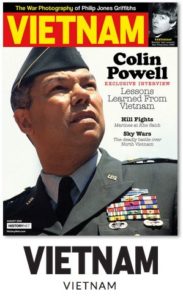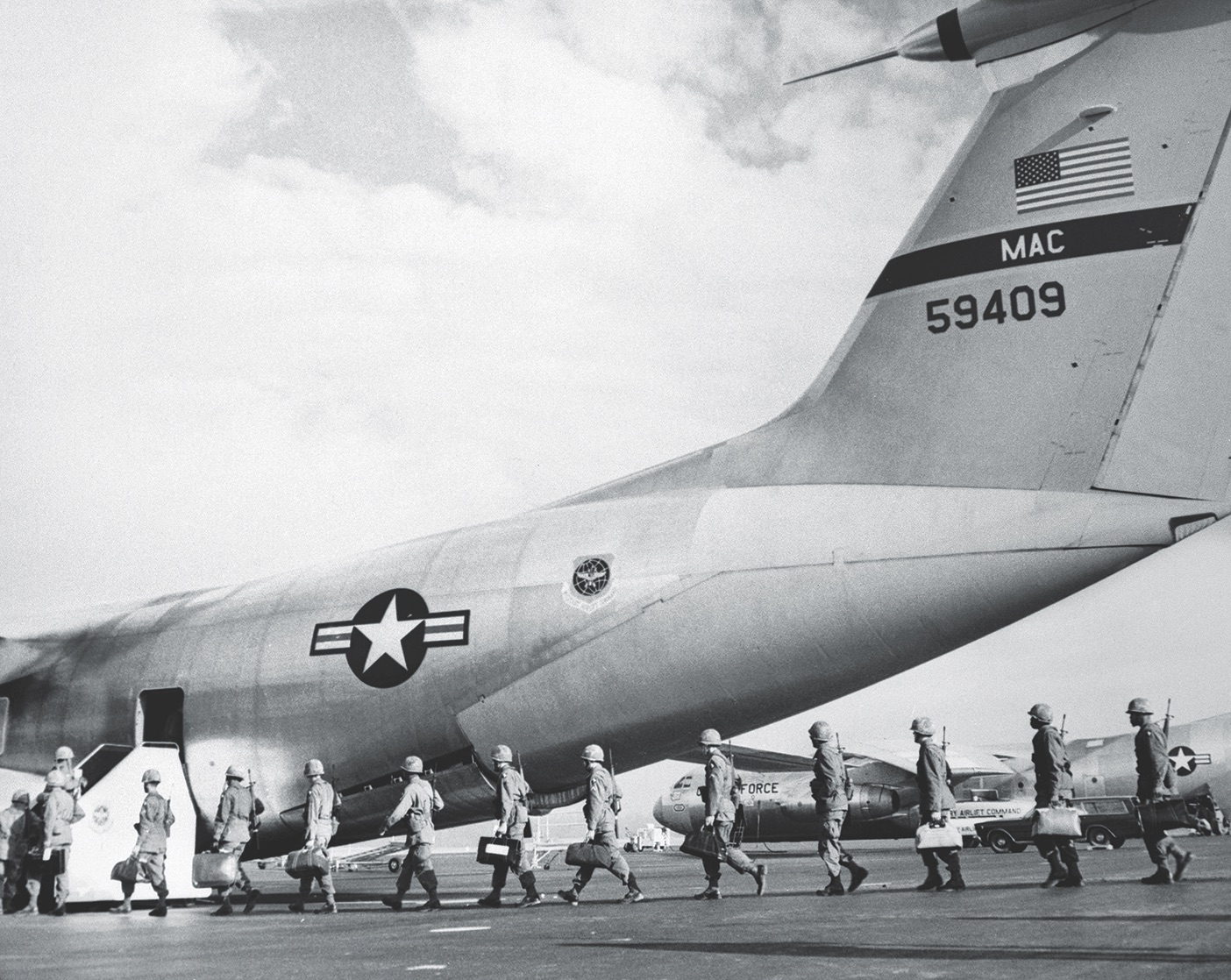The list of the Vietnam War’s iconic aircraft—with the McDonnell Douglas F-4 Phantom II fighter-bomber, Bell’s UH-1 “Huey” helicopter and the Boeing B-52 Stratofortress bomber usually near the top—doesn’t often include Lockheed’s four-engine jet transport, the C-141 Starlifter. But that cargo hauler, which may seem to some as merely a truck with wings, also has powerful, extraordinarily emotional stories to tell from its time in-country, which stretched from the earliest days of the war until the last.
C-141s were designed in response to an Air Force request for a global transport. Previous generations of propeller driven aircraft, such as the Lockheed C-130 Hercules, did not have the range, speed or payload capacity required to meet global threats. Air Force Lt. Gen. William Tunner was a driving force behind the new plane’s development. Tunner had been a prominent figure in air transport in the China-Burma-India theater during World War II and helped organize the 1948-49 Berlin Air lift to overcome a Soviet blockade of land routes to West Berlin. Tunner also commanded the airlift for Gen. Douglas MacArthur’s Inchon invasion during the Korean War, and MacArthur was so impressed that he awarded Tunner the Distinguished Service Cross.
A New Generation of Cargo Aircraft
Tunner and the Air Force wanted a new generation of cargo aircraft with the ability to fly nonstop from the West Coast to Southeast Asia. In November 1960, the Air Force issued development directive 415 seeking bids for the new aircraft. Lockheed beat Boeing, Douglas and Convair in the bidding competition. Once the design plans were approved, Lockheed began construction of 285 C-141s in Marietta, Georgia. The company conducted an employee contest to name the aircraft, and “Starlifter” was the winning entry. To speed up development of the initial Starlifters, Lockheed used existing technologies, instead of implementing new ones.
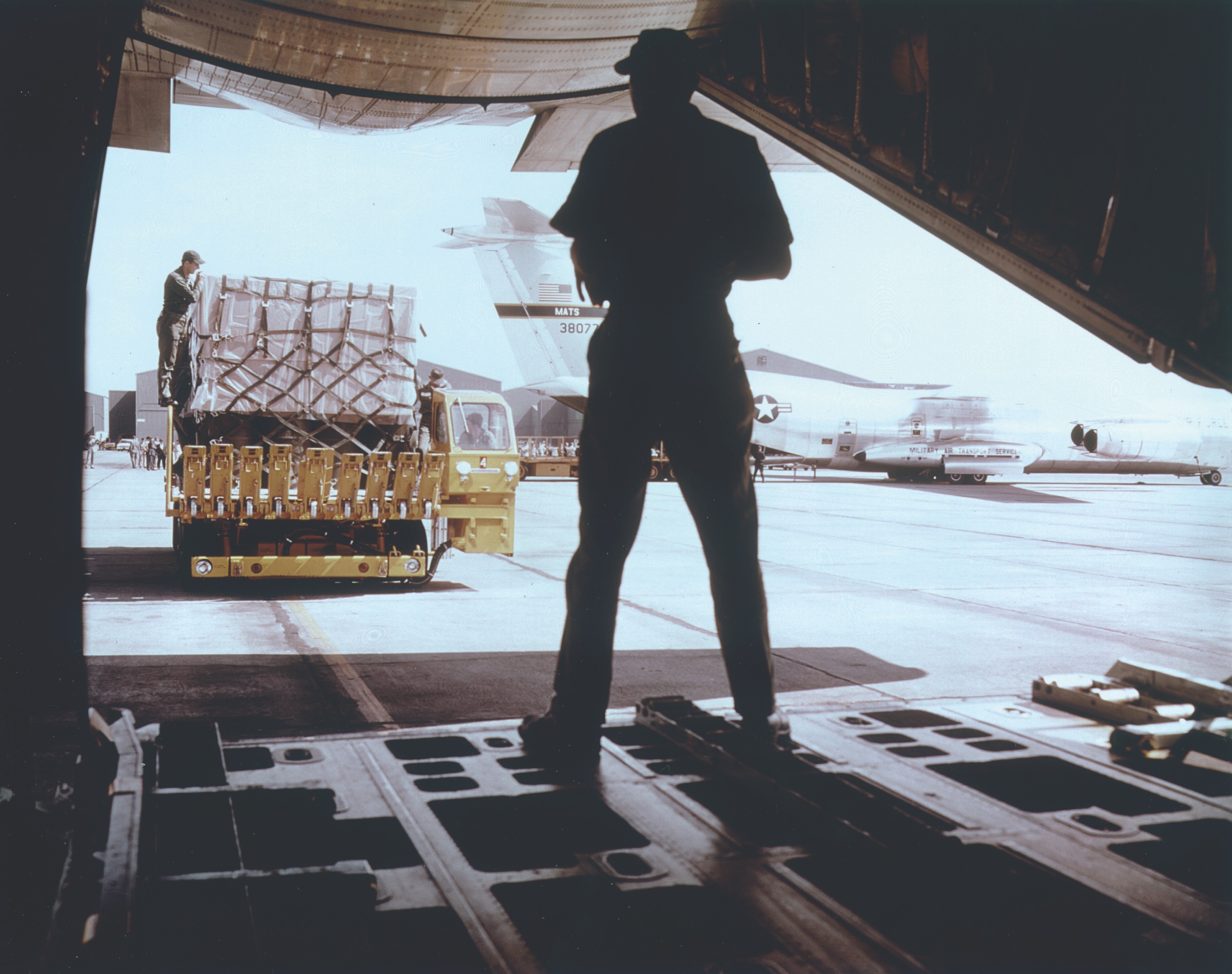
The company rolled out the first C-141 in August 1963 when President John F. Kennedy pressed a button in the White House to open the plant’s hangar door in Marietta. This aircraft, No. 61-2775, is on display at the Air Mobility Command Museum in Dover, Delaware.
The first C-141 flight took place in Marietta at Dobbins Air Force Base on Dec. 17, 1963— 60 years to the day after the Wright brothers first flew at Kitty Hawk, North Carolina. Lockheed’s chief test pilot, Leo Sullivan, piloted the first flight. During a conversation with a program manager the morning of his flight, Sullivan said, “I am going to go out and taxi around awhile. Then, if everything feels all right, I might just keep on going.” Everything felt all right. The first flight lasted about 55 minutes and ushered the Air Force into the era of heavy-lift, worldwide jet transport.
First Wartime Missions
When the buildup of U.S combat forces in Vietnam, beginning in spring 1965, demanded more planes to move troops and supplies to Southeast Asia, the C-141s went to work. Vietnam-era C-141s were the initial production variant “A” models. Post-Vietnam upgrades were a “B” model, first delivered in December 1979, featuring about 23 feet of extra fuselage and in-flight refueling capabilities, and a “C” model, first deployed with in October 1997, with an upgrade to digital instrumentation.
One of the Starlifter’s first wartime missions was “Operation Blue Light,” conducted by the Air Force’s 61st Military Air Wing to transport the 3rd Brigade, 25th Infantry Division, to Vietnam. Army Col. Everette Stoutner, the brigade’s commanding officer, received orders Dec. 10, 1965, to deploy from Schofield Barracks, Hawaii, to Pleiku in South Vietnam’s Central Highlands. His unit took off for Vietnam on Dec. 24. The 3rd Brigade consisted of three infantry battalions, an artillery battalion, combat engineers and various support/administrative units. The operation required 12 C-141s and four Douglas C-133 Cargomasters for what was then the single largest troop airlift in history, involving more than 3,000 men and an estimated 2,000 to 4,000 tons of equipment. The operation was completed in early 1966.
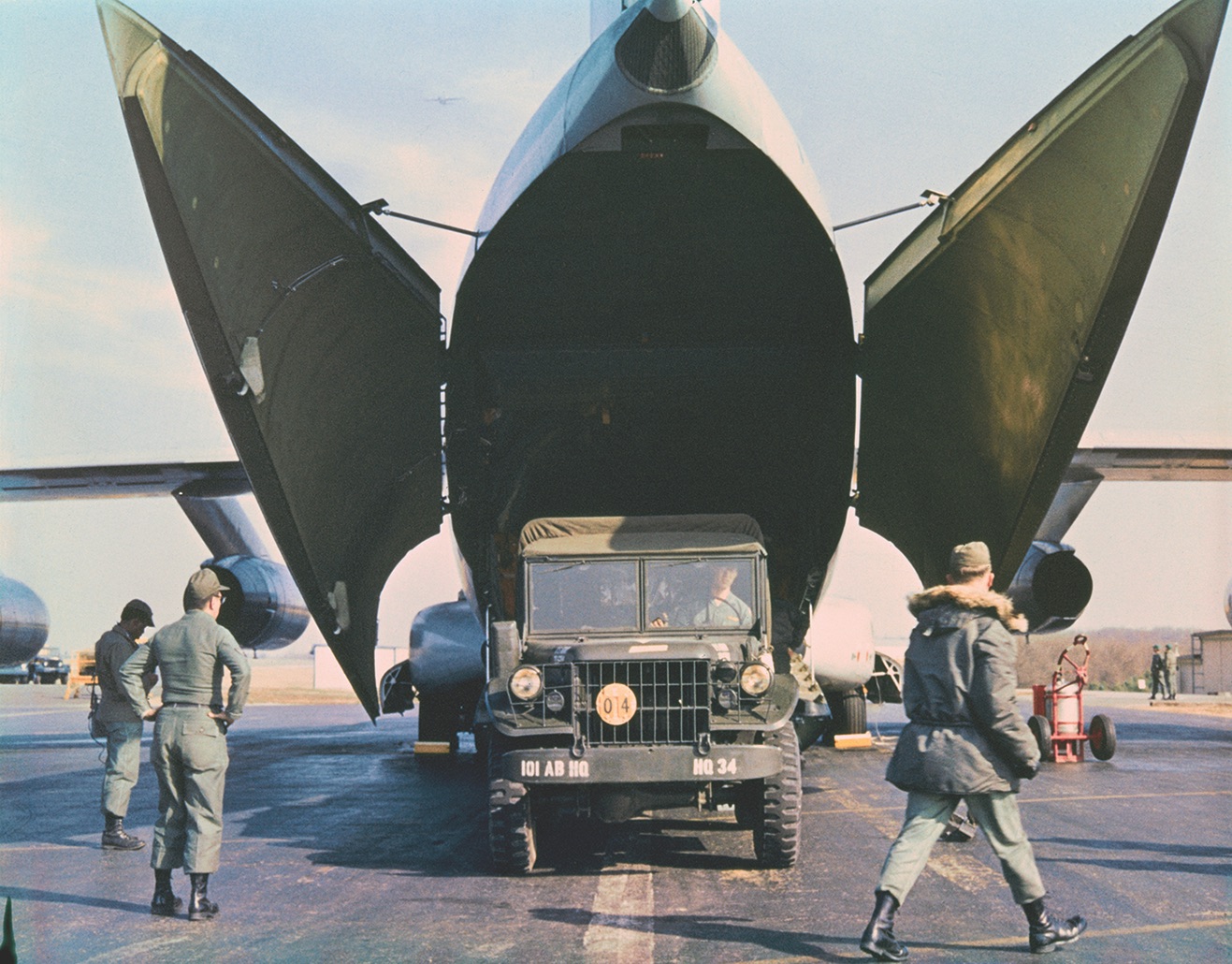
Cargo hauled by the C-141s included not just weapons and ammunition but also computing equipment, construction material, transportation gear and more. A crucially important but less-well-known cargo was blood for transfusions, which peaked at 37,000 pints in March 1969. Because blood is fragile and has a shelf life of just 21 days after being drawn from a donor, time was of the essence and temperature control was critical. Whole blood can become separated during air turbulence and hard landings, making smooth flying and landings even more important than normal for pilots. The Whole Blood Processing Laboratory at McGuire Air Force Base in New Jersey coordinated shipment to a blood bank in Japan. From there, blood was sent to Vietnam. The Japan stopover was skipped in emergencies.
Repatriating the Dead
The satisfaction of flights that carried blood to save lives was countered by the sadness of flights that took dead service members back to the United States. Starlifter pilot Alan Baker, an Air Force ROTC graduate of the University of Florida who trained at Tinker Air Force Base in Oklahoma, had been assigned to the 75th Military Airlift Squadron at Travis Air Force Base in California and was in good spirits after being promoted to first lieutenant when he observed caskets loaded on his C-141. He saw markers naming the deceased and “didn’t feel so good anymore.”
Seeing caskets draped with American flags stacked up in a hangar was an emotionally wrenching experience for everyone on the flight crew, regardless of rank, experience or position. Baker noted that caskets were typically loaded near the front of the cargo area—thus if cargo had to be jettisoned, the caskets would be spared.
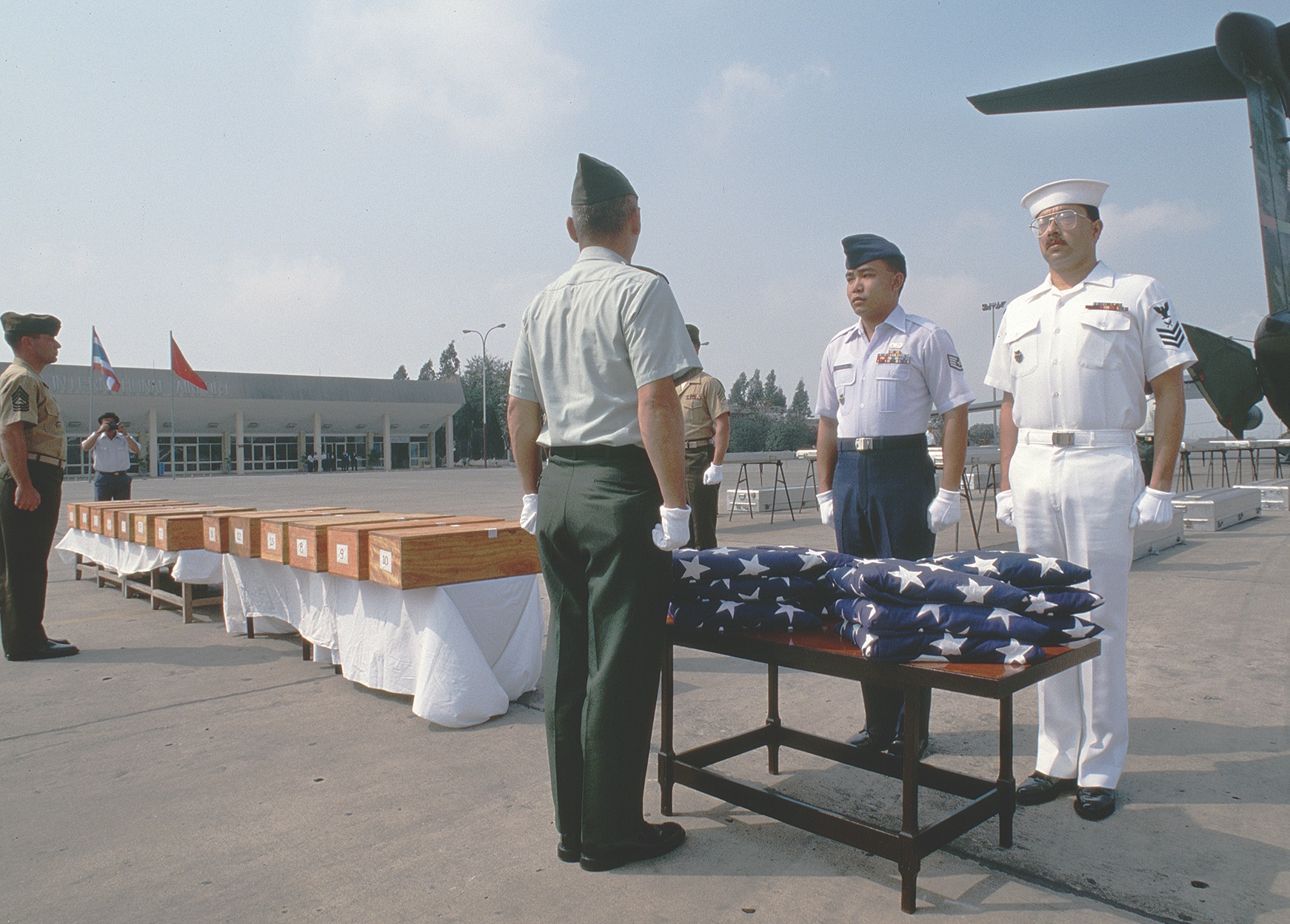
Baker led frequent trips from Travis to Vietnam and back from 1968 to 1970. One of his trips was not your typical military flight. While in the Philippines, Baker flew a load of cigarettes from Cubi Point Naval Air Station at Subic Bay to Clark Air Force Base, about a 50-mile trip, to avoid the frequent hijacking of truck shipments.
Long Trips
Hours of overwater flying without landmarks made navigators an essential part of a C-141 crew. Robert Schultz, who received navigator training at Mather Air Force Base in California after completing the Air Force ROTC program at Georgia Tech, faced a complicated set of flight plans as a member of the 58th Military Airlift Squadron, based at Robins Air Force Base in Georgia.
Flight plans for missions flown by the 58th began at Warner Robins and potentially included stops at Elmendorf Air Force Base in Alaska, Yokota Air Force Base in Japan and any number of bases in South Vietnam or Thailand. Return missions from Southeast Asia could have passed through Kadena Air Force Base in Okinawa, Japan, or Clark Air Force Base on the way to Elmendorf before finally arriving home at Robins—an exhausting trip cycle.
Shifts typically were 16 hours in the air and 12 hours on the ground. While one crew rested, another crew boarded the plane and kept cargo moving. During a 16-hour day, the flight might cross eight time zones. Airmen had lots of experience with jet lag.
Flight engineers and loadmasters rounded out the flight crews. Flight engineers were responsible for aircraft preflight checks, monitoring a wide range of aircraft performance data and providing safety information to the pilot/aircraft commander. In an emergency, the co-pilot would fly the C-141, while the pilot and flight engineer handled the problem.
Loadmasters were responsible for loading and offloading cargo, ensuring weight was properly balanced and reconfiguring aircraft for upcoming missions. They worked hard to quickly convert C-141s from a cargo or passenger configuration (on flights bound for Vietnam) into a hospital setting (flights out of Vietnam). To prepare for the hospital flights, cargo pallets or passenger seats from the previous mission had to be removed. Vertical poles to support litters were installed. Each load plan evaluated the evacuee’s medical condition and assessed how many wounded men were able to walk and sit in a seat and how many would require a gurney. The most seriously ill patients were placed forward in the aircraft—close to the nurse’s station.
Life and Death Missions
Navigator Schultz experienced many emotional moments during his C-141 flights. He took the 101st Airborne Division to Vietnam, knowing some of his passengers would die there. Sometimes family members were flown from the U.S. to hospitals in Asia if their relative in the armed forces was gravely injured. Schultz was on some of those flights. He thought, “How on earth could I console these family members?”
Starlifters were the primary medical evacuation aircraft during the Vietnam War. The first evacuation flight occurred July 15, 1965. In 1968, as casualties mounted, about 9,000 evacuations a month were completed. Some 6,000 C-141 evacuation missions took place between July 1965 and December 1972, the period with the most combat troops.
Nurses on C-141s played a pivotal role in these evacuations. Lola Ball, chief nurse with the 57th Aeromedical Evacuation Squadron based at Clark Air Base, was one of those depicted in the 1966 documentary, To Save a Soldier, which was narrated by Henry Fonda and showed how the nurses provided rapid yet quality medical care to injured soldiers. Usually there were no doctors onboard. Nurses had total responsibility for medical care in the air.
Ball’s niece, Debbie Vetter, noted that her aunt “saw and experienced things that none of us at home could understand.” In an interview for a 1967 Reader’s Digest story, “Our Flying Nightingales in Vietnam,” Ball commented: “I keep remembering a … casualty we flew home; he was just a kid with just a big beating heart really, and there was nothing much left of him — no arms, legs, eyes, just that big heart beating…Each time I checked to see how he was doing, he whispered, ‘Just fine, Ma’am, thank you kindly.’ Sometimes it hurts so much inside you just crawl back to quarters and have a quiet little cry.”
Dangerous Situations
Although C-141s were not combat aircraft, they were involved in combat situations. In July 1968, Tech Sgt. Paul Yonkie, stationed at Charleston Air Force Base in South Carolina, took part in a classified mission to bring home two prisoners of war released by the North Vietnamese. Yonkie’s C-141 was parked at Udorn Royal Thai Air Base when it was attacked by communist troops. The sergeant was seriously wounded and died Sept. 1, 1968. The airlift wing at the Charleston base dedicated a C-141 in 1998 as “The Spirit of TSgt Paul E. Yonkie” in his honor.
Even in noncombat operations, aviation involves risks, and C-141s experienced two fatal crashes in Vietnam. In March 1967 at Da Nang, a C-141 crossed an inner parallel runway and was struck by a Marine A-6 Intruder attack aircraft on a takeoff roll. One of the causes was a communications breakdown attributed to poor radio equipment in the tower. Five of six C-141 crewmen were killed. The two A-6 crewmen managed to eject from their aircraft and escape the explosion.
The next month at Cam Ranh Bay, seven men were killed during an attempted takeoff on a flight transporting cargo to the United States. The cause was an incorrect setting on the “spoiler select switch,” which controls the plane’s lift. The error prevented the aircraft from getting enough lift to climb, and it crashed into the sea. Aircraft commander Maj. Rodney Williams was one of only two who survived, and he devoted his later career to air-safety issues, focusing on crew takeoff procedures and aircraft design.
As with all aviation equipment, C-141s required maintenance from ground crews. Capt. Ron King, a maintenance officer with the 38th Air Rescue and Recovery Squadron at Tan Son Nhut Air Base near Saigon, said Lockheed’s relatively straightforward design simplified maintenance work. King and maintenance crews serviced the whole C-141 universe—engines, pneumatics, avionics and communications equipment. Those men received generalized training at the Chanute Air Force Base aircraft mechanics school at Rantoul, Illinois, but were not provided with much training specific to the C-141.
Taking POWS Home
American involvement in the war began to wind down in the early 1970s. After the Paris Peace Accords were signed in January 1973, the C-141s were assigned another important, and emotional, job: fly freed American POWs back to the United States in Operation Homecoming. The first preparations for those flights had begun in 1968. Before Operation Homecoming commenced, the Air Force launched “Project Spruce Up” to clean all C-141s that would be used in the POW flights and add a painted/taped red cross on the vertical stabilizer.
A C-141 Starlifter with tail No. 66-0177, later nicknamed the “Hanoi Taxi,” was assigned to the first Homecoming mission, scheduled for Feb. 12, 1973, when it would board freed POWs at Hanoi’s Gia Lam airport. Before the Starlifter’s arrival, a Vietnam-based Lockheed C-130 Hercules landed at Gia Lam with medical personnel and repair crews who might be needed for any mechanical problems on the C-141, which was flying in from the Philippines. A spare C-141 was in the air near Da Nang if needed. Two North Vietnamese buses took about 40 POWs to the airport.
Among the few journalists present that day was ABC News correspondent Laura Palmer, who observed that the men appeared to have “no identity—whatever their height or race, their faces had the same lack of expression, they walked the same, stood the same.” She reported that it was “was primitive survival….If you’ve never seen humans like this, I hope you never do.”
Maj. James Marrott, assigned to the 15th Military Airlift Squadron at Norton Air Force Base in California, piloted the first C-141 mission to Hanoi. The navigator was Lt. Col. James Warren, who had been a member of the famed Tuskegee Airmen, a group of African American air crews during World War II.
Others on the Starlifter included co-pilots Capt. John Shinsoskie and Lt. Col. William Simmel, flight engineers Senior Master Sgts. Albert Alston and Frank Thom, and loadmasters Master Sgts. Robert McElvoy and Gerald Norris.
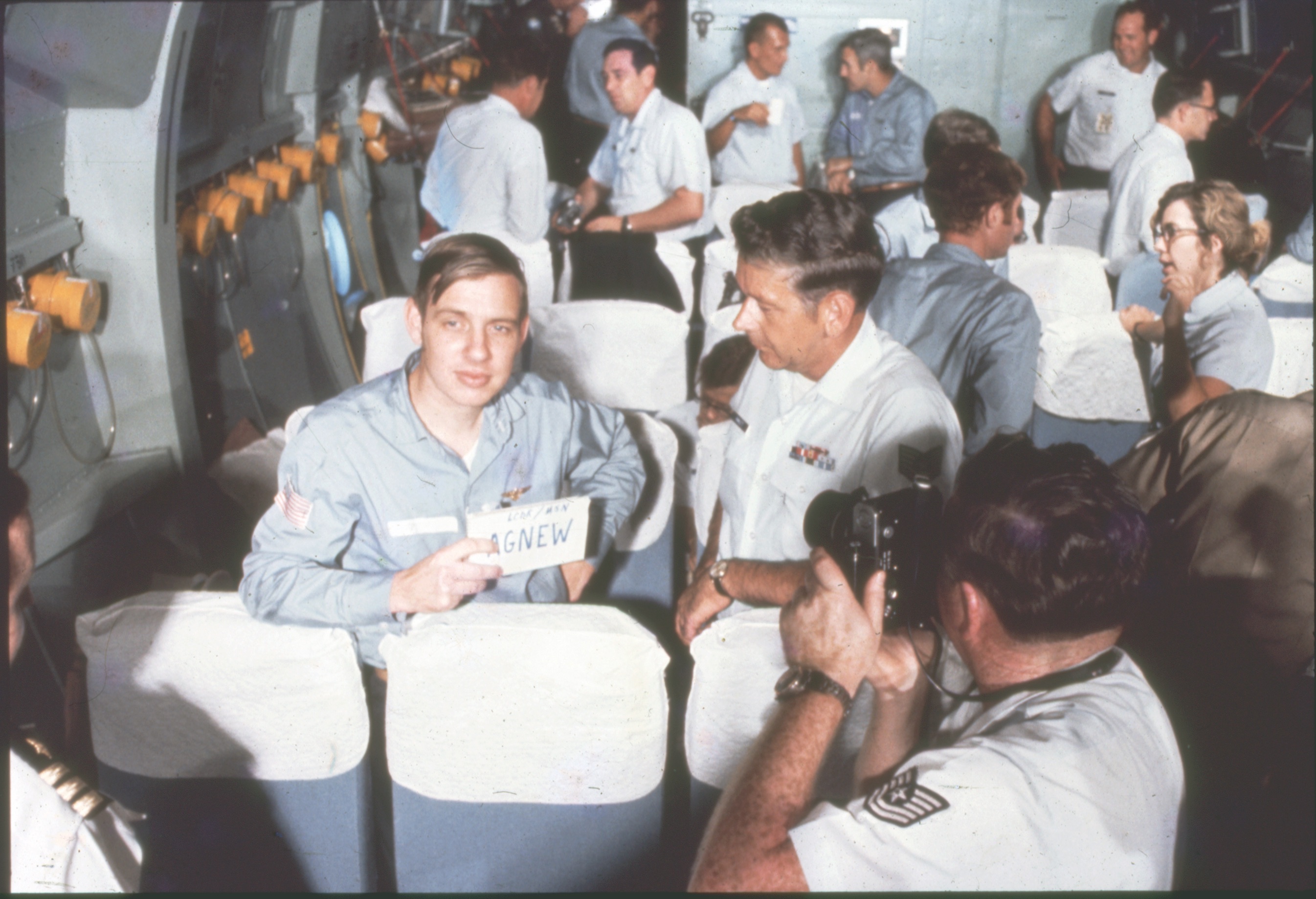
Marrott left Hanoi about 35 minutes after landing and embarked on a 2½-hour flight back to the Philippines. The flight crew heard a huge cheer above the engine noise when the aircraft took off and a second cheer when it cleared North Vietnamese airspace en route to Clark Air Force Base. Reflecting later on that mission, Marrott said: “It’s got to be the biggest thrill of all. It’s certainly the most gratifying and it’s far and above anything else I’ve done. As far as personal satisfaction and job importance, it just got to be the tops.”
There were a few light moments that day, in hindsight. As Air Force Col. James Collins, a pilot who spent seven years as a POW, waited to be released, he told a North Vietnamese guard, “At least I get to go home….you have to stay.” Afterward Collins wondered why he took the risk of saying something that could have halted his release at the last minute. He found an Air Force colonel and told him, “Get me on that [C-141]. Quick!”
The POWs began their emotional and physical healing process during their Starlifter flights. Ultimately 591 military and civilian personnel were released and returned to the U.S. in Operation Homecoming. The flights to Clark that began on Feb. 12 continued through March 29. The final group of released POWs who departed Clark landed on American soil April 4, 1973.
Evacuating Refugees
The return of the POWs did not end U.S. involvement in Vietnam, and C-141s played a vital support role as South Vietnam continued the fight without the assistance of U.S. troops. When the South’s government and military began to collapse in spring 1975, four separate but related C-141 refugee airlifts rescued some South Vietnamese with ties to the United States. During those operations, the Air Force worked with the Navy and private contractors to fly refugees from Southeast Asia to several islands in the Pacific and eventually to the United States.
For example, in Operation New Life (April 23-Nov. 1, 1975), the 13th Air Force helped coordinate 375 airlifts—using a mix of C-141s and other aircraft—that evacuated more than 50,000 South Vietnamese before the Saigon government’s collapse. Evacuees were flown to U.S. bases in the Philippines, then to Guam and Wake Island, and ultimately the United States.
Starlifters continued to fly into Vietnam long after the war ended. One of those flights was commanded Maj. Gen. Ed Mechenbier, released by North Vietnam in February 1973 and the last POW on active military duty. In May 2004, Mechenbier flew to Hanoi on aircraft 66-0177— the same plane that took him out of Hanoi in 1973—to bring back the remains of two U.S. servicemen. He had spent more than five years at the notoriously brutal Hoa Lo prison (sarcastically dubbed the Hanoi Hilton). Mechenbier was shot down in June 1967 after flying 80 missions in an F-4C Phantom. He called the 2004 flight “the most professionally and personally gratifying mission that I’ve ever had.”
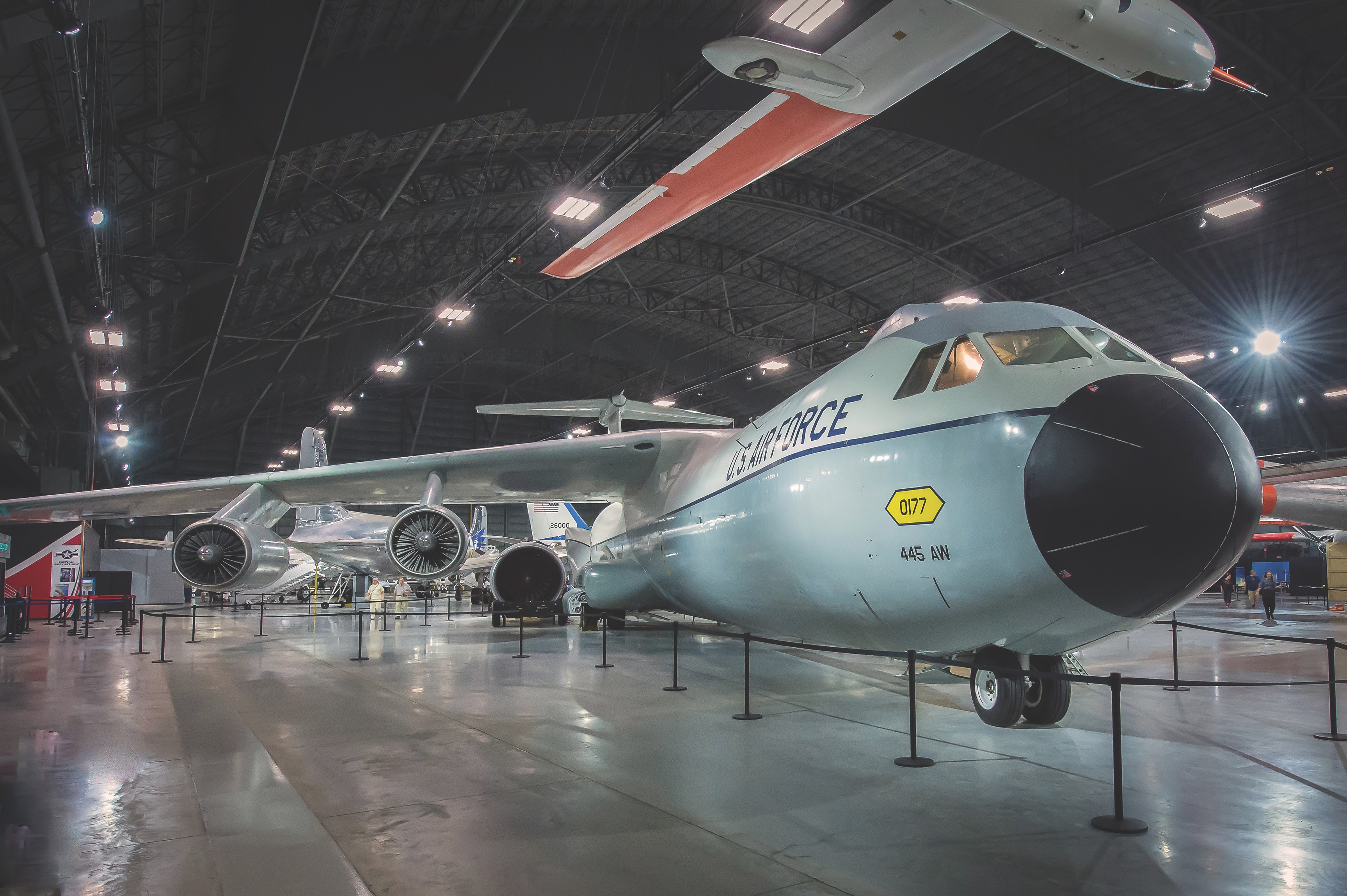
The postwar flights of C-141s took their crews all over the world. Their missions involved disaster relief aid, such as assistance to survivors of Hurricane Katrina in the Southeast United States in 2005; science-related trips, including multiple expeditions to McMurdo Sound in Antarctica, and worldwide military missions, among them transporting Minuteman intercontinental ballistic missiles to maintenance bases.
Preserved For History
Like almost any aircraft, the C-141s were phased out as the military developed new technology. By the early 2000s, many C-141s had been retired and scrapped.
However, Mechenbier’s 66-0177 was saved, thanks in part to the efforts of Tech. Sgts. Dave Dillon, Jeff Wittman and Henry Harlow at Wright-Patterson Air Force Base in Ohio. They noticed that the C-141 they were working on had a small label near the flight engineer control panel, reading “Hanoi Taxi.”
The discovery led to a campaign to preserve the aircraft, now displayed at the National Museum of the United States Air Force in Dayton, Ohio. No. 66-0177’s journey to the museum on May 6, 2006, was the last flight of a C-141 Starlifter.
During their years in service, C-141s were instrumental in saving lives, hauling cargo and flying missions all over the world. They won admiration even among some pilots who flew the most illustrious planes of the Vietnam War. Former POW Collins said that when he saw the C-141 at Hanoi’s Gia Lam airport he thought: “I’m a fighter pilot, and those transports don’t do anything for me, but that was the most beautiful airplane I think I’d ever saw.” V
Barry Levine is a freelance writer and the author of Yankee Air Museum, a book about an aviation history museum in Belleville, Michigan.
This article appeared in the August 2020 issue of Vietnam magazine. For more stories from Vietnam magazine, subscribe here:
